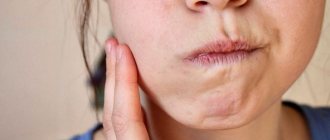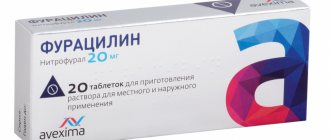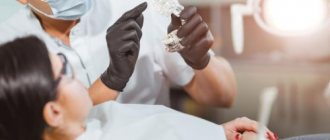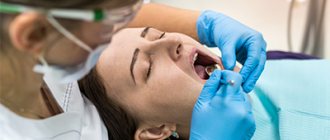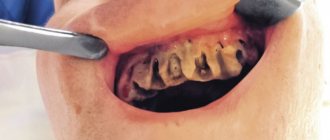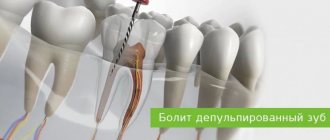After tooth extraction, especially if the procedure was complex, there is inflammation, swelling, suppuration in the mouth, you want to speed up the healing process of the wound and avoid complications from the appearance of pathogenic bacteria in it. To achieve this, surgeons often recommend mouth rinsing after surgery. But this does not always happen - sometimes the doctor will advise you not to do this.
Why is that? What is the correct way – when and with what to rinse your mouth after tooth extraction, and whether to rinse? We're talking to the doctors at the Family Smile dental clinic.
How gums heal after tooth extraction
It is worth knowing the specifics of the process in order to understand what is considered normal and what is not, and whether it is worth contacting the dentist again.
The average tissue recovery time is 10-15 days. During this period, the pain goes away, and new mucous gum tissue appears in place of the hole.
It all happens like this:
In the first two to three hours after the manipulation, the gums may bleed, and a thrombus will form in the socket - a blood clot that closes the wound from the penetration of bacteria. You shouldn’t injure him or try to spit him out.
Up to three days after the operation, the blood clot gradually thickens, decreases, and connective tissue begins to form inside the wound.
Three to seven days after the operation, the clot becomes lighter, and the hole is covered with young connective tissue. Pain and swelling go away.
After one to two weeks, bone tissue begins to form under the gum, in place of the extracted tooth.
After a couple of weeks, superficial healing is complete.
The timing may vary depending on the specific case and the patient’s health condition.
Do not ignore:
swelling, pain, bloody or other discharge from the socket that does not go away for more than 4 days.A “dry” socket is a deep cavity in the gum without a blood clot, but with a yellowish-gray, greenish, white coating and the smell of rotting.
Difficulty opening the mouth, clicking, pain in the temporomandibular joint that appeared after removal and did not go away within 2-3 days.
Numbness in parts of the gums and cheeks that did not go away after the anesthesia ended.
Runny nose, nasal congestion, and fever that appeared after removal.
In these cases, be sure to consult your doctor again.
How to use
Considering the different forms of microorganisms that chlorhexidine should affect, the concentration and treatment mechanism are selected by the dentist individually, depending on the overall picture of the disease. Examples of treatment can be viewed in the table below:
| Disease | Concentration of chlorhexidine solution | Reception scheme | Duration of therapy |
| For stomatitis | 0.05% | Apply after complete cleansing of the oral cavity. Rinse your mouth with the solution for 30-60 seconds without stopping, 2 times a day. | Up to 10 days |
| For gingivitis | 0.05% | Rinse twice a day immediately after brushing your teeth and using dental floss. | Up to 10-12 days |
| For gum inflammation | 0.05% | First, the patient rinses the mouth with chamomile decoction or iodine-saline solution. Then, treat the mouth with 1 tbsp. l. chlorhexidine. It is forbidden to eat food within 2 hours after the treatment procedure. To treat infants, the affected areas are moistened with a cotton pad soaked in chlorhexidine. | Up to 10 days |
| After tooth extraction | 0.05% | Treatment is carried out 1 hour after brushing your teeth, 2-3 times a day. The solution is poured into the mouth and held for 1-2 minutes, while the head is slightly tilted from side to side. Head movements should not be too sharp to avoid injury to the protective blood clot. It is forbidden to eat food within 1 hour after treatment. | The duration of therapy is determined by the doctor individually. |
| For toothache | 0.05% | Rinsing is carried out 3-5 times a day, holding the solution for 1-2 minutes. | 7 days |
| For periodontal disease | 0.05% | It is used at the time of removing plaque in the form of baths. The product must be in contact with the pockets of periodontal tissue and remain in effect for 2-3 minutes. | 5-7 days |
| For preventive purposes | 0.05% | Caress the oral cavity for 20 seconds, 2 times a day | 5 days |
How to rinse your mouth after surgery
Ready-made pharmacy antiseptics and solutions made independently at home are applicable. Let's consider how to rinse your mouth after gum surgery or tooth extraction.
Your doctor may recommend not rinsing the wound on the day of surgery. Every other day, you can make oral baths with decoctions of chamomile, sage, or solutions of furatsilin, 0.05% chlorhexidine.
There are quite a few such drugs, and your doctor will give specific recommendations on what to rinse your mouth after gum or tooth removal. The choice of a suitable drug depends on the condition of the hole, the complexity of removal, the age of the patient, whether he has allergies or sensitivity to some components of the products.
Carefully! It is not recommended to use ethyl alcohol, hydrogen peroxide solution, brilliant green or iodine for rinsing. They can cause pain, burn the mucous membrane and lead to the detachment of a fresh clot.
How to rinse your mouth if you have a tooth pulled out -
As you already understood, antiseptic mouth rinses are not mandatory. If the tooth was removed in the absence of purulent inflammation, if you have good oral hygiene and there are no untreated carious teeth, you can do without them altogether, simply rinsing your mouth with clean water after eating. Or, if you wish, you can rinse your mouth with regular herbal mouth rinses or fluoride solutions, because. they also have a weak antiseptic effect.
But if the tooth was removed due to inflammation, or you had a complex tooth extraction involving an incision in the gums and sutures, stronger rinses are needed. We will discuss in detail what to rinse after tooth extraction in these cases in the description of the following medications.
1) Chlorhexidine solution 0.05% (instructions) –
Chlorhexidine digluconate has a fairly good antiseptic effect, is sold without a prescription, and its cost for a 0.05% solution is only about 30 rubles. Has a slightly bitter aftertaste. After tooth extraction, rinsing with chlorhexidine should be done 3 times a day (each time the solution should be kept in the mouth for about 1 minute). And remember that you can’t do active rinsing movements - you can only weakly rinse and bath!
There is also another popular antiseptic, Miramistin, which costs many times more and is slightly inferior in antiseptic effect to chlorhexidine. The only advantage of Miramistin is its antiviral activity, which is important for stomatitis, but not after tooth extraction. In addition, after rinsing the mouth with chlorhexidine, a thin indelible film of chlorhexidine bigluconate is formed on the surface of the oral mucosa, which will exert its antiseptic effect for up to 5-7 hours.
2) Soda-salt baths –
It is preferable to do rinses and baths with soda or salt only if, in addition to tooth extraction, you have had a gumboil (purulent gum abscess) opened. After making the incision, the doctor additionally inserts a glove rubber drain into it so that the edges of the incision do not stick together and purulent exudate flows out of the wound. Soda-salt baths will allow you to better draw out purulent exudate from the wound. They can be done 4-5 times a day.
But keep in mind that if you have drainage, you still shouldn’t do active rinsing movements, because... in addition to the loss of a blood clot from the socket of an extracted tooth, this can also lead to the loss of drainage from the wound. In addition to salt baths, in this case it is also recommended to periodically rinse your mouth with chlorhexidine solution 2-3 times a day.
3) Rinse aid “Parodontax Extra 0.2%” –
This rinse contains a higher concentration of the antiseptic Chlorhexidine - 0.2%, which will mean a significantly more pronounced antiseptic effect than regular chlorhexidine with a 0.05% concentration. This drug makes sense to use if you had a traumatic, complex removal with sutures or additionally opened a purulent abscess on the gum.
Rinses (baths) with this drug are carried out only 2 times a day, and it can be used for no more than 10 days. Although after a simple simple removal, antiseptic rinses are usually necessary for only 3-4 days, and after a complex removal - for 7-8 days. The cost of the drug is from 230 rubles per 300 ml bottle.
4) Rinse aid “PRESIDENT Antibacterial” –
This rinse also contains 0.2% chlorhexidine, but in addition it has high concentrations of anti-inflammatory components (mallow, chamomile and echinacea extracts). Accordingly, this drug will be good after a difficult removal with sutures or after opening a gum abscess. It will quickly relieve inflammation and speed up wound healing. A 250 ml bottle costs from 200 rubles.
5) “Stomatofit” (in the form of a solution) –
This is a concentrated solution of medicinal plants, which is diluted with water before use. It contains a high concentration of extracts of chamomile, sage leaves, oak bark, calamus root, common thyme, peppermint, and arnica. It has a good anti-inflammatory and weak antiseptic effect. Will speed up healing.
How to rinse your mouth after tooth extraction
The main rule is not to rinse your mouth too vigorously. Immediately after tooth extraction, you should do oral baths rather than vigorous rinsing. Rinsing vigorously may cause the fresh clot to fall out of the socket. Bleeding will occur and healing will be delayed.
How to rinse your mouth with Chlorhexidine after tooth extraction? Let's use the example of this popular tool. First, rinse the mouth with warm boiled water to remove any remaining food. Then we put 15-20 ml of the drug into the mouth and hold it for 15-30 seconds. On the second or third day after removal, gentle rinsing movements are allowed. Spit and repeat 2-3 more times. The number of rinses during the day is 3-6.
How much to rinse your mouth after tooth extraction depends on how the healing is progressing. You can stop rinsing when young gum tissue has formed at the site of the hole.
Medicines from the pharmacy
It is better to use antibacterial and antimicrobial agents that do not contain alcohol. This way, you will protect the delicate tissue of the damaged gum from unnecessary burns.
- Miramistin.
It has the power to destroy bacteria, viruses, and fungi. You need to use a solution with a concentration of one hundredth of a percent. It is practically harmless. Suitable for babies and pregnant women. Use both as a solution and as a spray. Apply 3 times a day for a week.
- Chlorhexidine is
active against bacteria and some types of viruses. A solution with a concentration of no more than 0.05% is used. Miramistin is an order of magnitude cheaper. Maintains effect for up to 4 hours.
- Hydrogen peroxide
is a classic option. ITS three percent solution is a powerful antiseptic. However, use it yourself with caution. Contact with the wound produces foam, which can damage the blood clot. The liquid itself can cause irritation of the mucous membrane.
- Furacilin solution.
Used for purulent inflammation of the wound. In pharmacies it is available in liquid form and in tablets, from which you need to make a solution yourself. Crush 10 yellow tablets and dissolve in a liter of water. Rinsing is not recommended; it is better to use baths.
You can use decoctions
from chamomile
,
calendula, oak bark, sage, St. John's wort and eucalyptus.
On the effectiveness of anti-inflammatory herbs
in
In this case, you need to consult a dentist.
If the wound after tooth extraction is large and there is a risk of damaging the blood clot, it is better to prefer baths to rinses.
Take a sip of the solution into your mouth, maintain the liquid in the wound area and spit it out.
Attention! Do not use potassium permanganate. Reasonable people abandoned it long ago - it burns mucous tissue.
How to eat after tooth extraction
There is an opinion that it is better to fast for the first day after surgery and drink through a straw so that liquid does not get into the wound.
In fact, everything is not so: You can already eat 2-3 hours after the manipulation - the body needs strength to recover. For several days, you should include slightly warm, soft foods in your diet and avoid hard, spicy, too cold or hot foods. Optimal choice: puree soups, milk porridge, stew.
You can drink immediately after removing the cotton swab from your mouth. Contrary to popular recommendations, you should not drink through a straw - when you retract your cheeks, a vacuum effect is created, which can tear the clot from the wound.
The dentist will talk about the main points in oral care after surgery and answer questions after the procedure. Follow the recommendations so that you don’t encounter complications and healing goes quickly!
